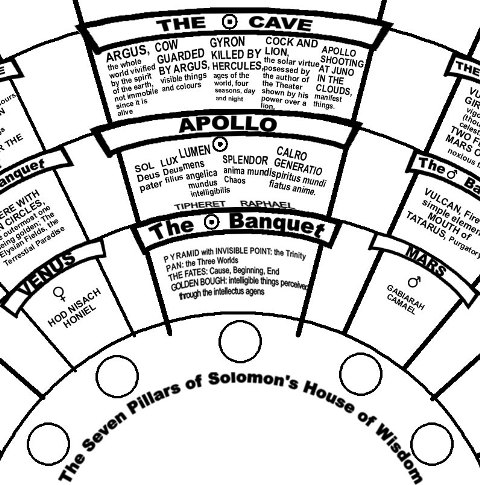Mnemosyne’s Touch: Archival Narrative and Collective Memory
 Thursday, April 9, 2009 at 03:44PM
Thursday, April 9, 2009 at 03:44PM
Mnemosyne’s Touch: Archival Narrative and Collective Memory

My next book/new media project, Mnemosyne’s Touch is in the proposal phase. This edited collection of experimental and transmedia scholarship (essays and projects that have a textual component but are also “digital born” or networked to on line sites, installation spaces, or multimedia/software programs and interfaces) is organized around the idea of “ephemeral memory”: how memory as both a literary and cultural form is re-mediated and transformed across historical periods and within the memory spaces and technologies connected to those moments. I will be contributing two of my own pieces to this collection: 1) a comparative essay on Renaissance memory theaters and contemporary digital database narratives that is drawn from my work on the Hollins Community Project; and 2) an interactive digital work that explores the digitizing of early anatomical images and both Restoration-era (England, 1660s) and post-modern approaches to Epicurean theories of the body and embodiment. I am also working in an editorial capacity to include the work of other scholars interested in literary and historical approaches to new media studies.
This next series of projects are interested in the ways in which shifts in expressive media (technologies of textural, aural, and visual representation) alter our conceptions of bodies and memories, and the extent to which they make available new connections between narrative and empathy. An archive is any repository for histories, stories, or images that provide the narrative context for a particular event, moment, or knowledge construct. Archives in the ancient and early modern world were first the embodied memories and papyrus of individual soothsayers or poets, and later became catalogues and taxonomized libraries. Today, the archive is being digitized, re-made into a virtual projection of bits, codes, and databases. The virtual impermanence of such archives raises questions about how collective memories are formed and stored in the contemporary moment. At the same time, these new archives are not only more accessible to some extent, but also rely on a new notion of the living, or in situ, archive, a repository and model for memory that is dynamic, changing, and created out of distributed control and authorship. The archive is and always has been a kind of collective embodiment of knowledge and experience. Yet embodiment takes on collective, distributed, and physical-actual forms amid these new modes of mediation. Older forms of collective memory and the archive offer us comparative contexts for thinking through what we gain, lose, and obscure with new modes of mediation. Thus, the book project (and accompanying digital and multimedia artifacts) will consist of a series of comparisons between earlier and contemporary types of archives: How do early modern “memory theatres” and contemporary versions of the database re-produce or dislocate ideas about the relationship between bodies and texts in creating narratives? How does “code” morph as a practice and concept between the mental mnemonics of ancient epic and the hand-driven rituals of hypertext “mark-up” language? What do the Visible Human Project[1] and the early modern anatomy theatre have in common as image archives?
Transformations in media technologies offer up new narrative structures that influence our imagined relationships with others. While there are real concerns over how global media and technologies are increasingly “disembodied,” there is also tremendous potential in new media to re-imagine affective relationships. For example, a recent project with indigenous communities of New Mexico is exploring the ontology of “tags” and "tagging" in computing environments.[2] “Folksonomy” (collaborative tagging, social classification, social indexing, and social tagging), a technology and social practice that is re-defining encyclopedic knowledge as “wikis” and political efficacy and participation as “blogging,” has tremendous implications for how we imagine the idea of community and the body politic through virtual narrative.
I continue my theoretical and practical development of the concepts of incipient narrative and affect with this new phase of my work. Incipient narrative refers to the procedures of fictional and non-fictional storytelling that combine embodied, interactive, and in situ authorship with conventional texts and modes of authorship and reading. My earlier work on The Hollins Community Project serves as a bridge to the next phase of my writing and research. The Hollins Community Project is a locative new media installation that explores embodiment, affect, and distributed authorship in creating narratives of place. The installation occurs in a borderspace located between Hollins University, the first chartered women’s college in southwestern Virginia, and “The Hollins Community,” a community established by African American slaves brought to Hollins in the 1800s. The installation mixes historical material with in situ virtual narratives and embodied interactions with the space to experiment with the affective and distributed aspects of narrative. The project employs a new software tool called PlaceMark© that makes possible collaborative, mobile constructions of narrative.
In summer 2009, the culmination of two years of work on the Hollins Commuity Project will be installed as a public, web-based artifact the will be available for use by researchers, students, and new media artists and scholars.
[1] http://www.nlm.nih.gov/research/visible/visible_human.html
[2] Ramesh Srinivasan, Emerging Databases, Emerging Diversity (ED2): National Science Foundation-funded initiative to study methods by which digital collections can be shared via systems that maintain diverse tags, ontologies, and interfaces. The collaboration involves Cambridge University's Museum of Anthropology and Archaeology, and the Zuni community of New Mexico
